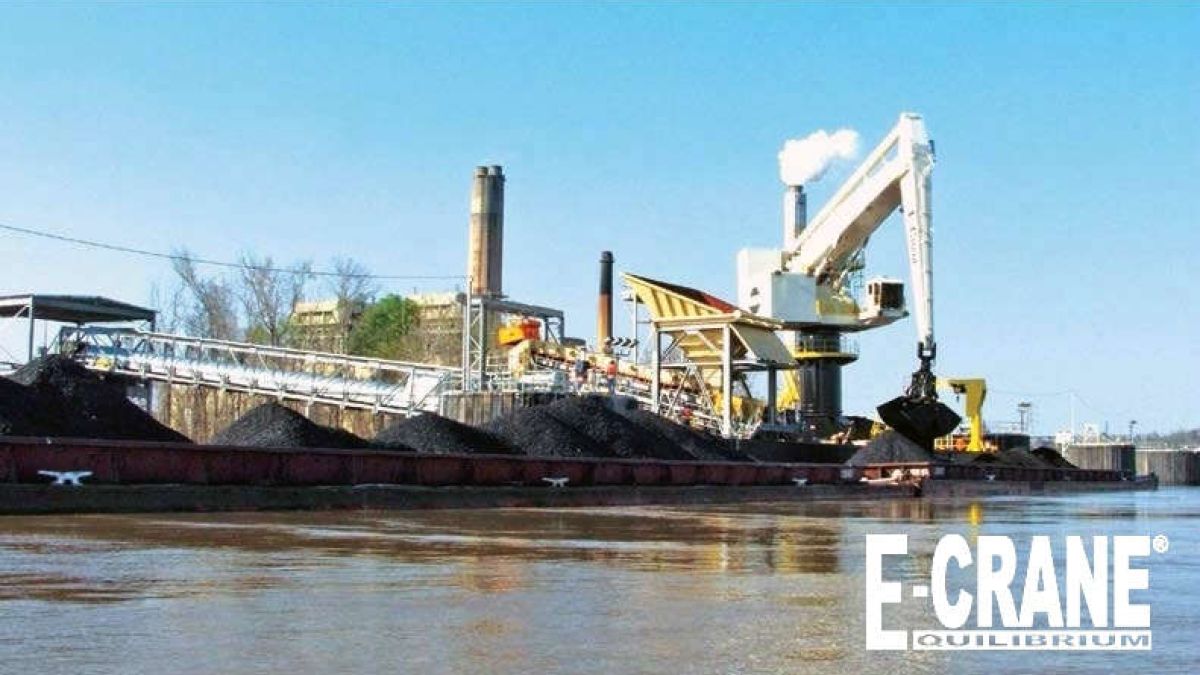
E-Crane Cuts Unloading Time At Lowman Power Plant
PowerSouth Energy Cooperative has upgraded its Lowman Power Plant on the Tombigbee River near Leroy, Ala., for flue gas desulfurization (FGD) and other quality improvements, including a new barge unloader.
For many years, the company used an old gantry rope crane to unload coal from barges. But since the new FGD process requires limestone, the company now has to handle coal and limestone, requiring a faster, more efficient and more versatile barge unloading capacity.
In addition, the Tombigbee River level at the Lowman plant fluctuates up to 35 feet, depending on the season and weather. “This had caused us some real problems over the years,” said utility supervisor Mike Barton.
“Crews were forever running up and down steps trying to secure the barges under difficult circumstances. It was a time and safety factor that we just had to live with.”
After investigation, however, the company found a solution to the increased material unloading and river level problems: an E-Crane floating terminal consisting of a 2000 Series E-Crane, two barges (one for the E-Crane and one to support the conveyor), a hopper, a barge-haul system, and a barge-breasting system. The E-Crane is equipped with a 25-yard bucket and can unload 1,500 tons per hour.
“E-Crane designed and constructed it all for us on a turnkey basis, including allelectrical controls and wiring,” said department supervisor Tom Noble. “The E-Crane
system has cut our unloading time in half, cut our maintenance time dramatically, simplified operation and reduced our costs substantially.”
E-Crane’s hydraulically pivoting, mechanically linked boom design keeps the machine in balance throughout the working range. The efficient use of gravity reduces horsepower requirements and power consumption up to 50 percent.
Five series of E-Cranes are available with outreach up to 165 feet and duty cycle capacity up to 50 tons. A central lubrication system and accessible hydraulics simplify
maintenance. E-Crane’s positive grab control allows for precision grab positioning, while the push-down force ensures full grabs for every cycle. The modular machine design concept allows E-Crane engineers to tailor custom solutions for customers’ needs.
The barge-haul system provides “utility grade” unloading equipment and can move one or two loaded 35- by 195-foot jumbo barges with a capacity of 1,500 tons. The vector-opposed barge-haul system consists of two opposed winches—one forward, one trailing (upstream/downstream)—that work in tandem with a continuous 7/8-inch-diameter steel cable.
The control system uses dual vector drives, commanded by a PLC, to electrically coordinate both winches for maximum barge control. Winch motor speed is monitored continuously by the PLC to eliminate freewheeling or loss of payout control.
The barge can be secured against drifting away from the river cell or dock face by a continuous barge-breasting cable. The system can be operated from inside the E-Crane or from a remote location. “The E-Crane people were easy to work with—very helpful and cooperative,” Noble said. “The E-Crane was delivered on time, within budget, and worked perfectly right from the start.”
Barton added: “We went to the E-Crane International USA facility in Galion, Ohio, for several days of training on how to operate and maintain the equipment. Then E-Crane personnel spent a lot of time with us here at our Lowman plant when the equipment was set up and operating.”
Source: Waterways Journal, February 2011